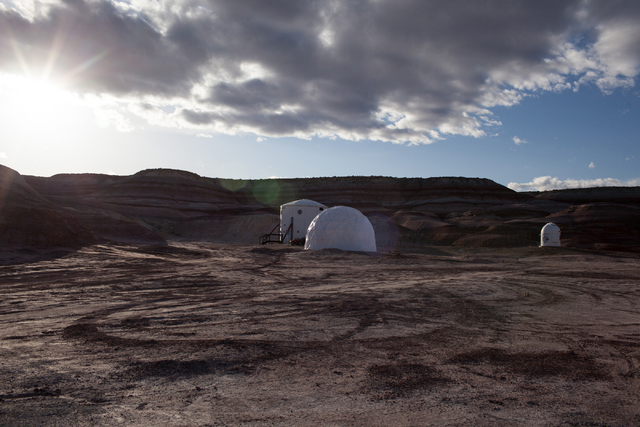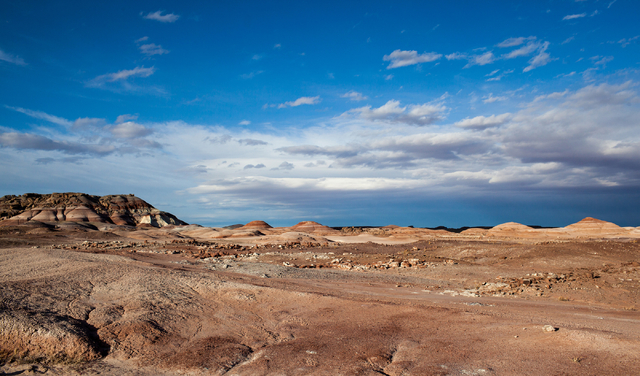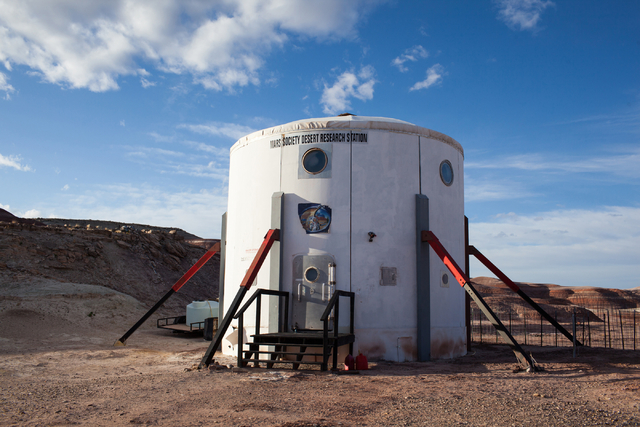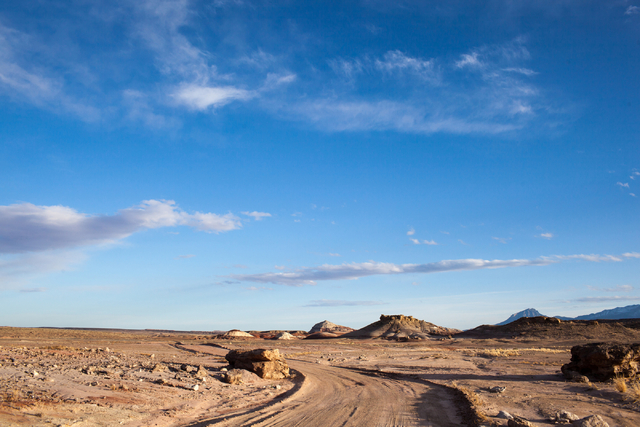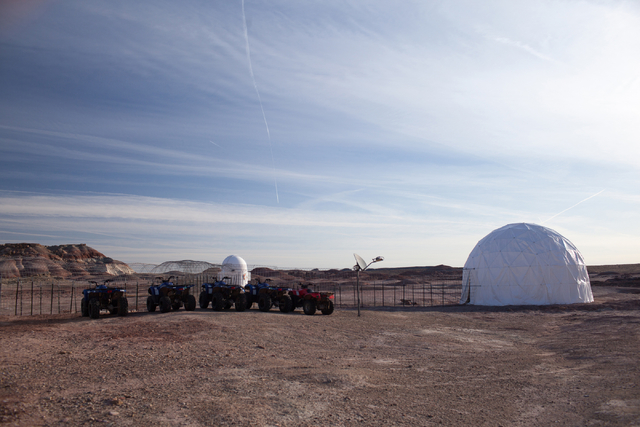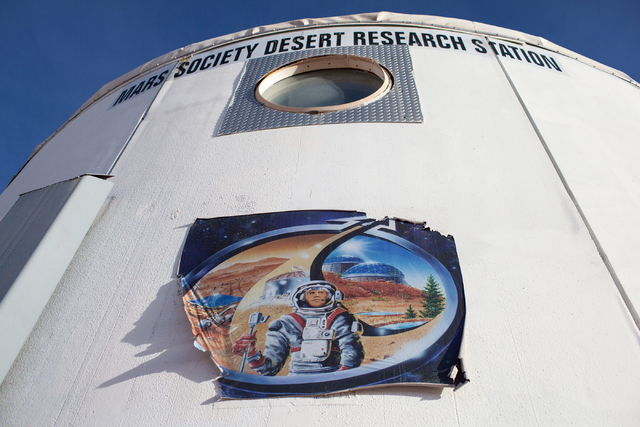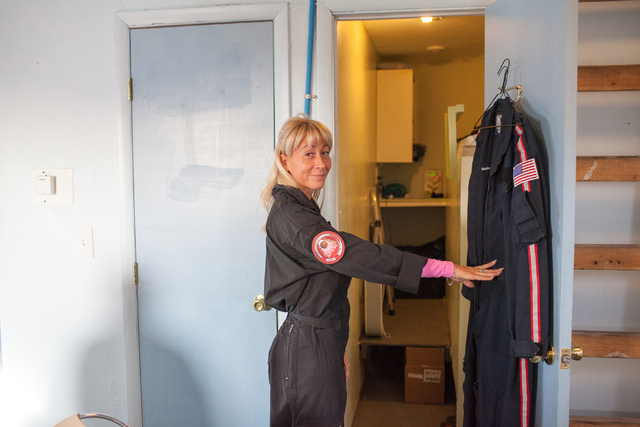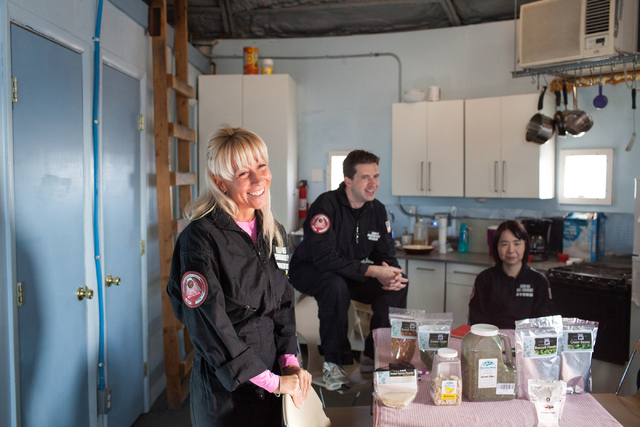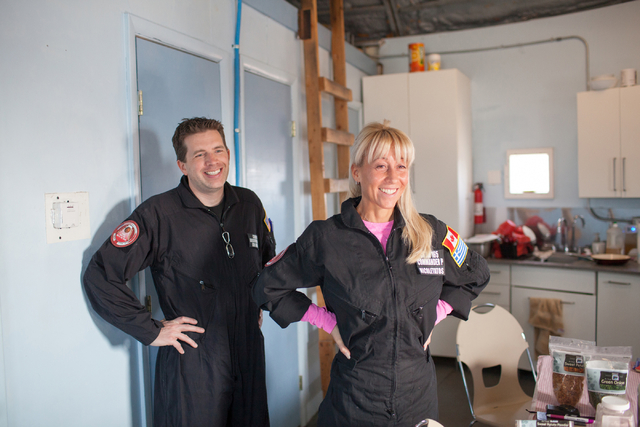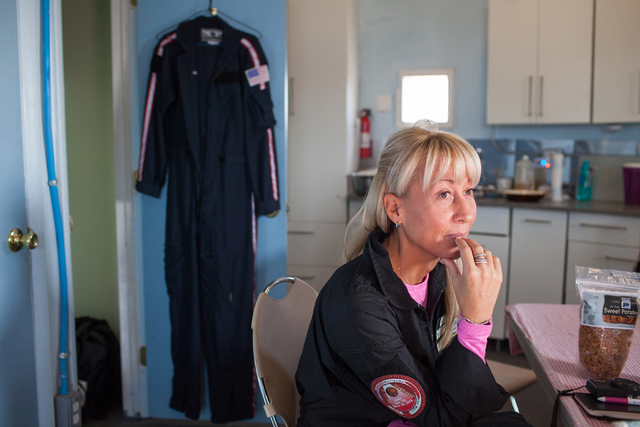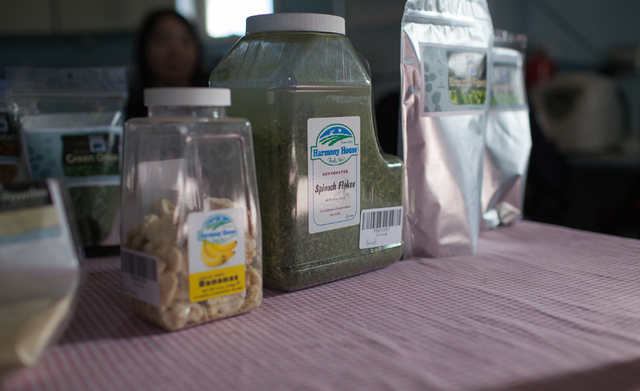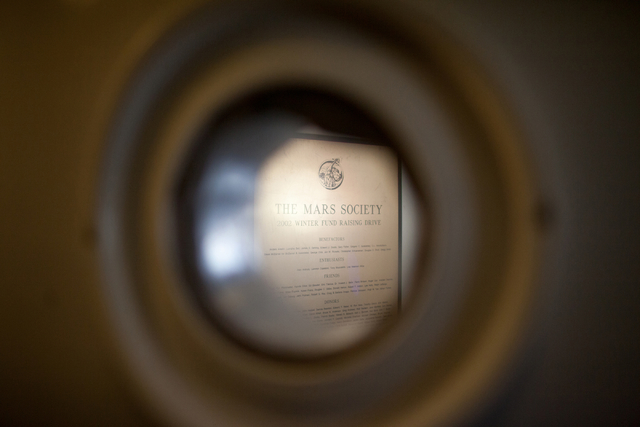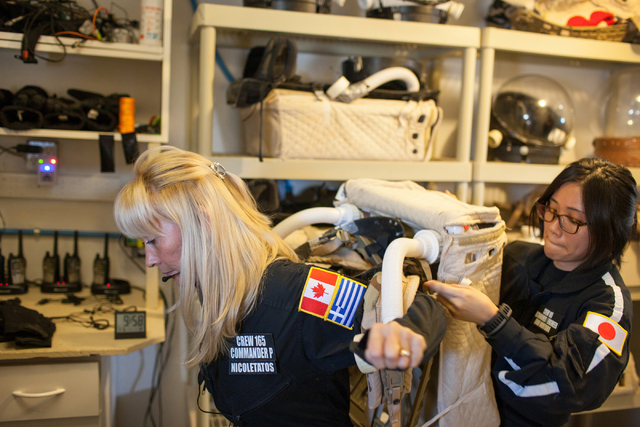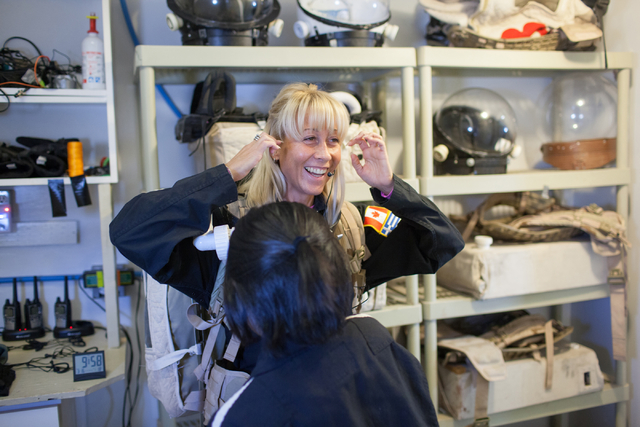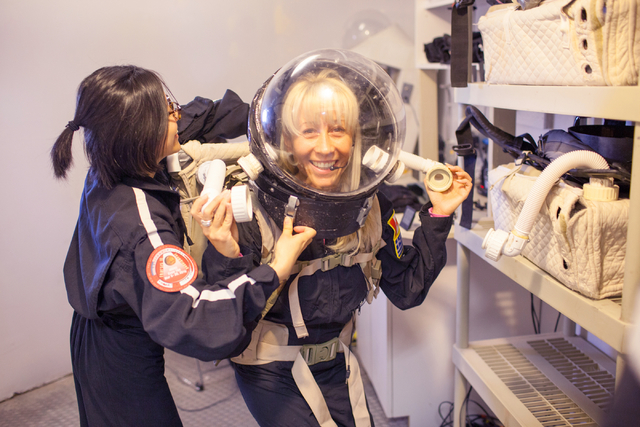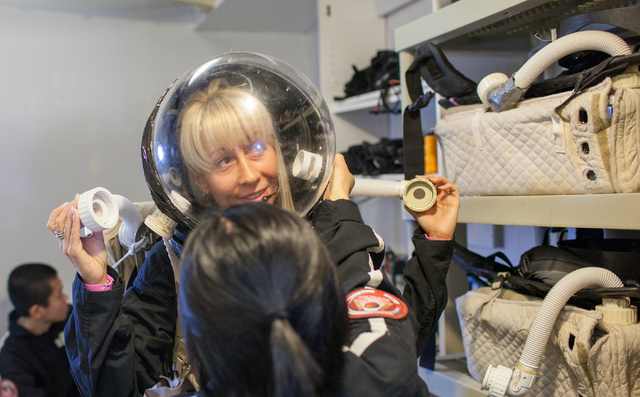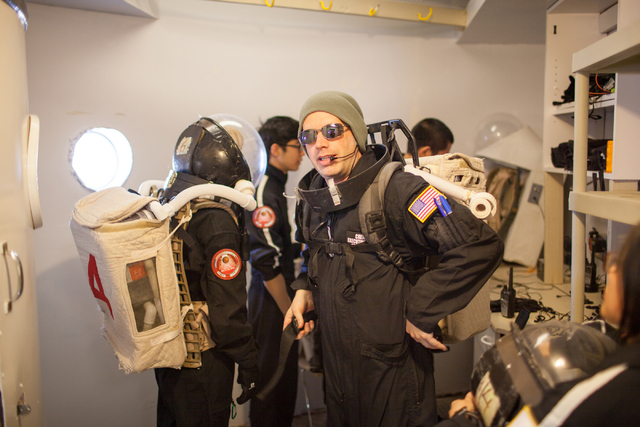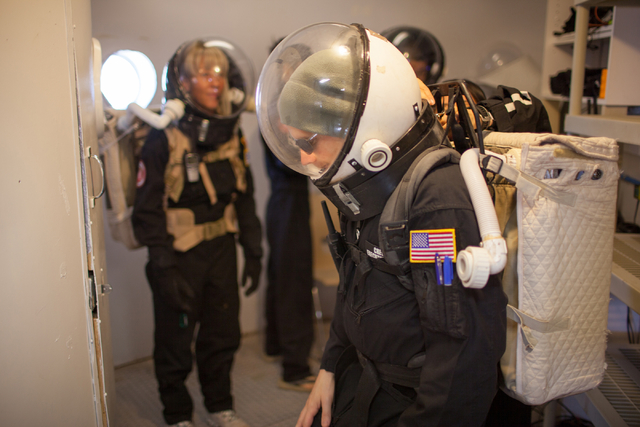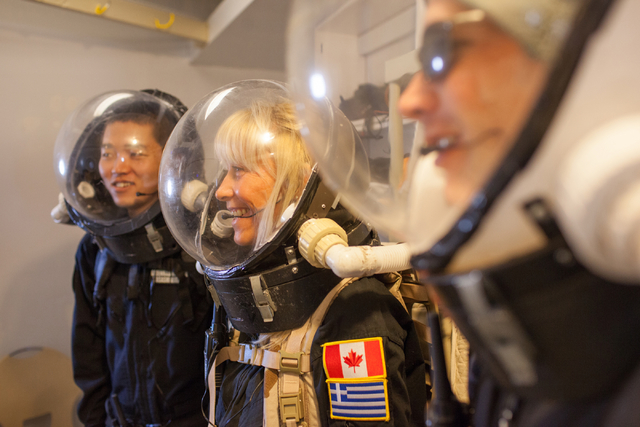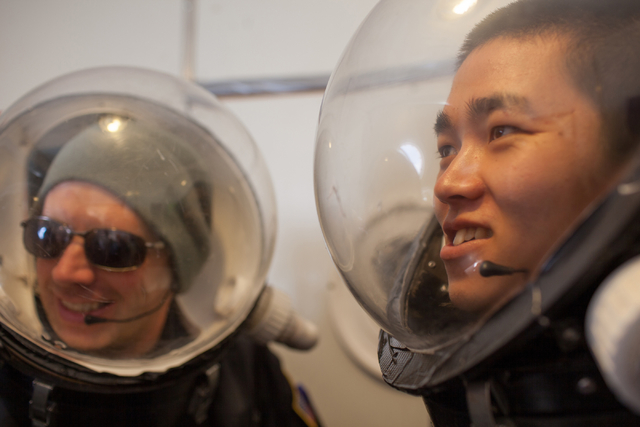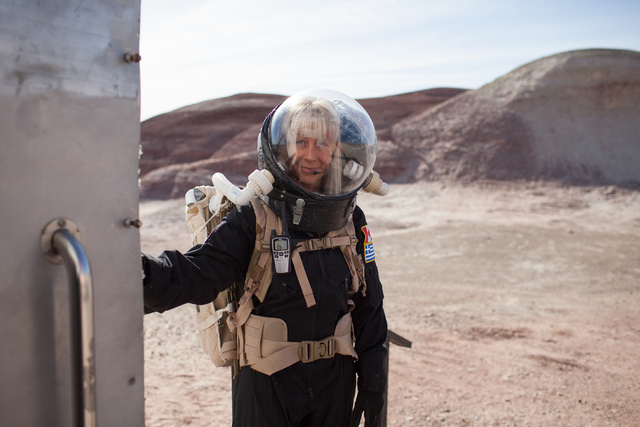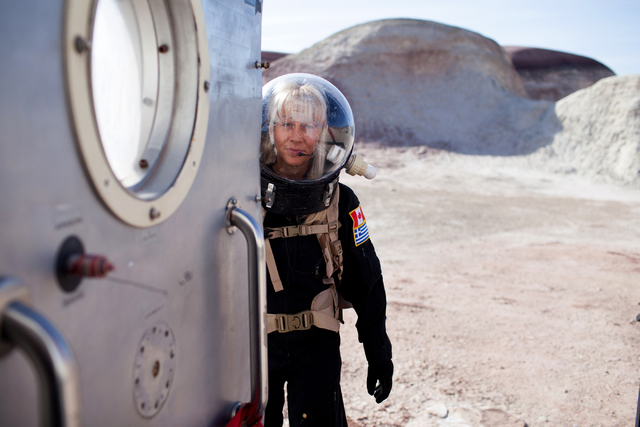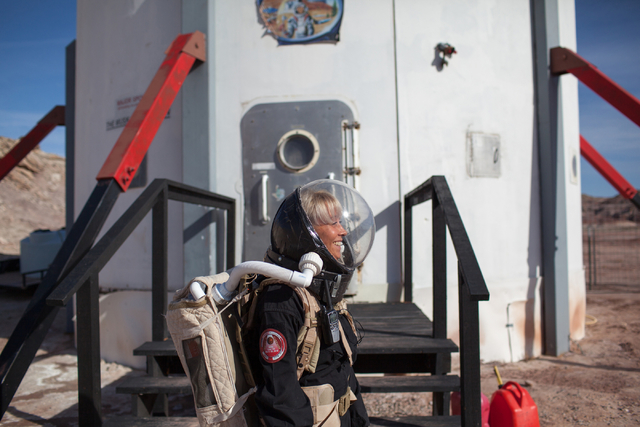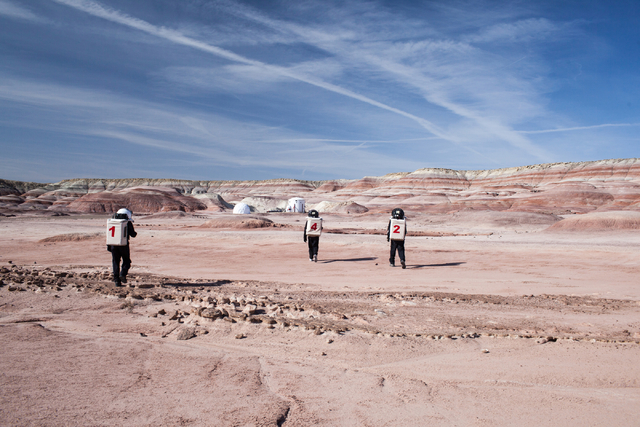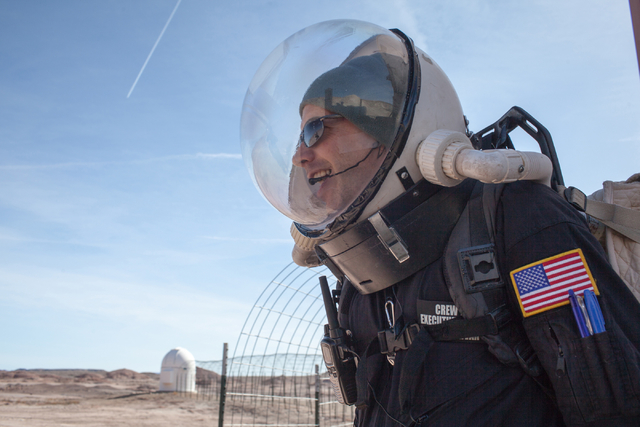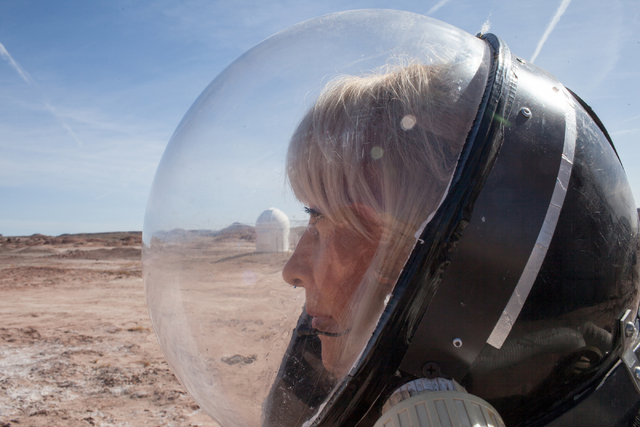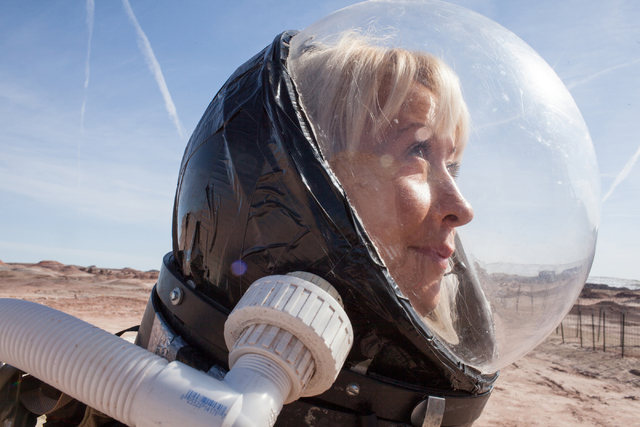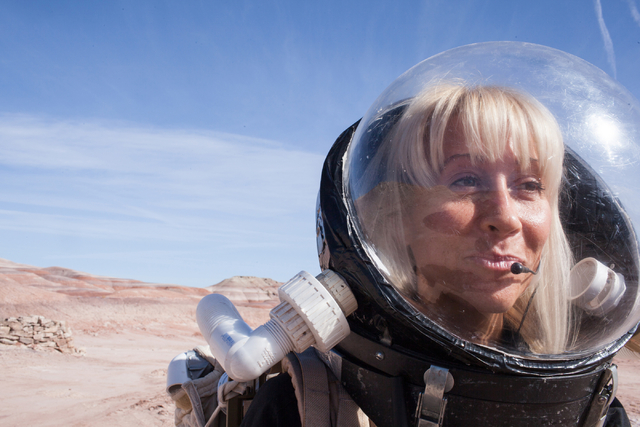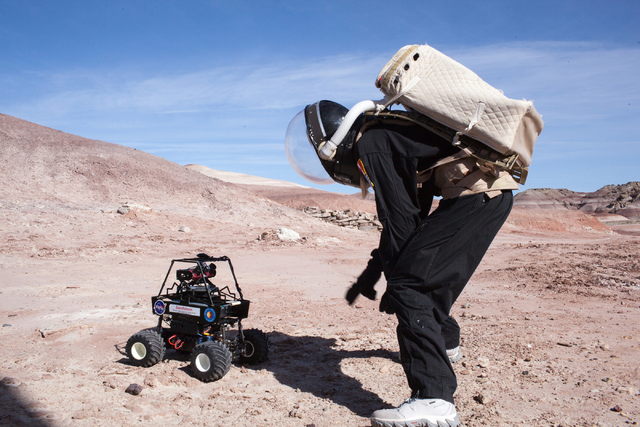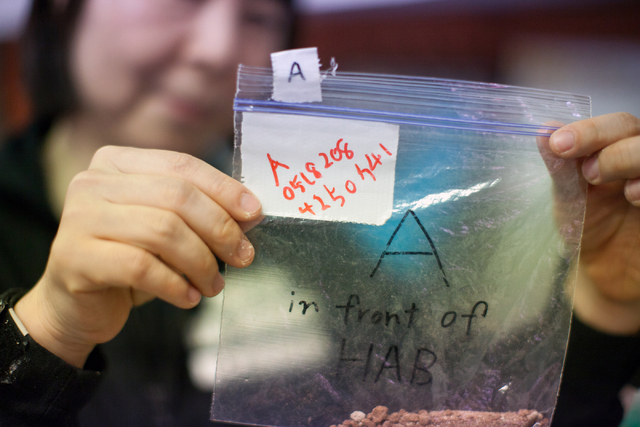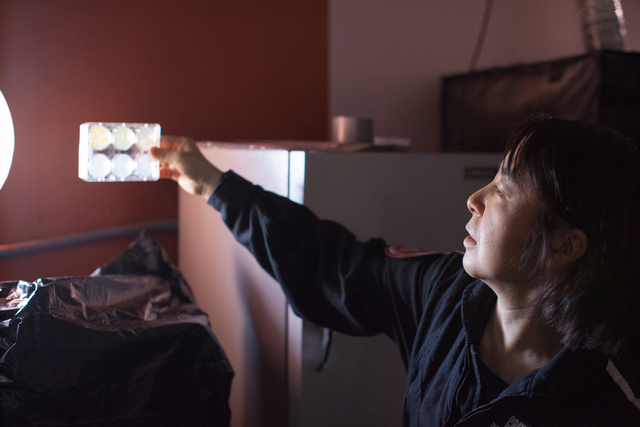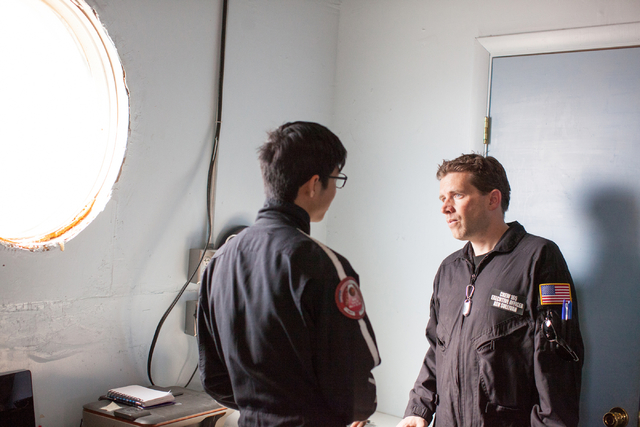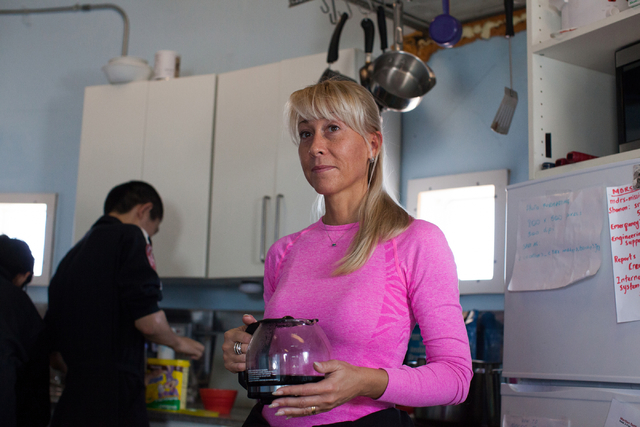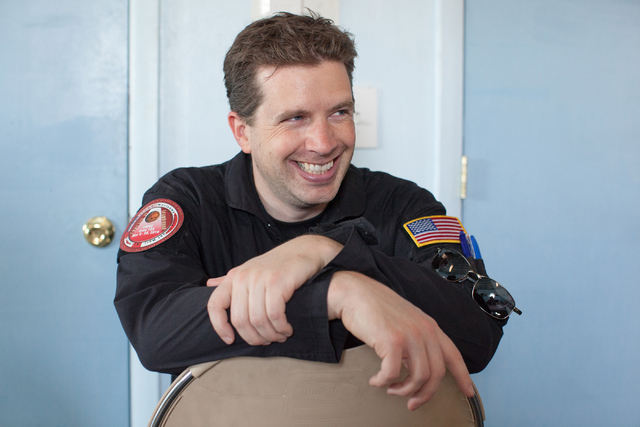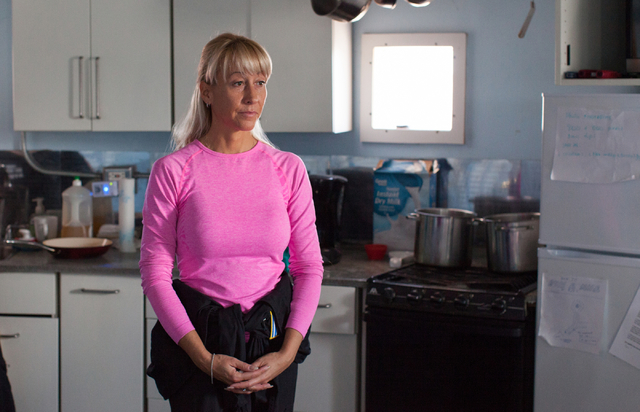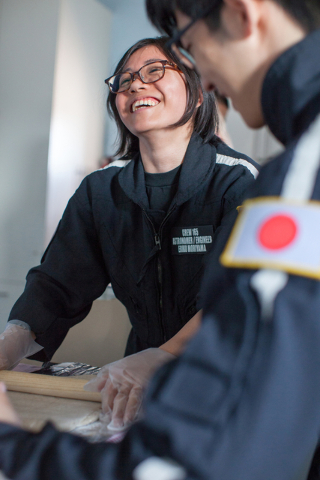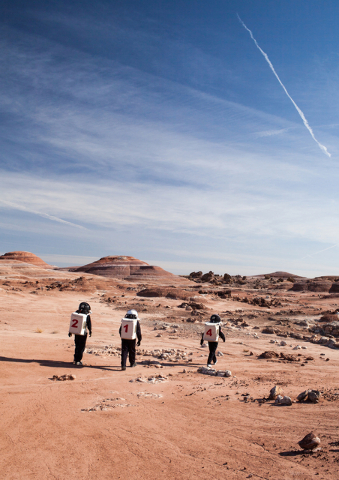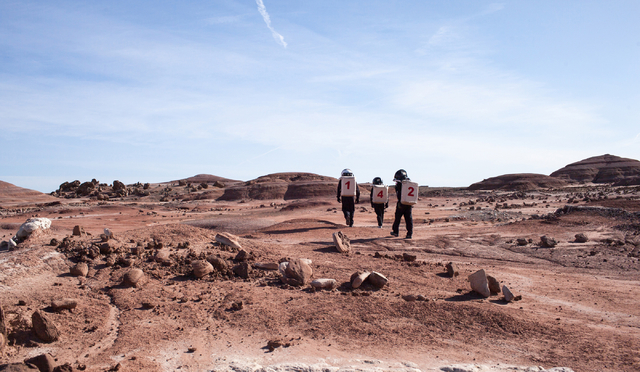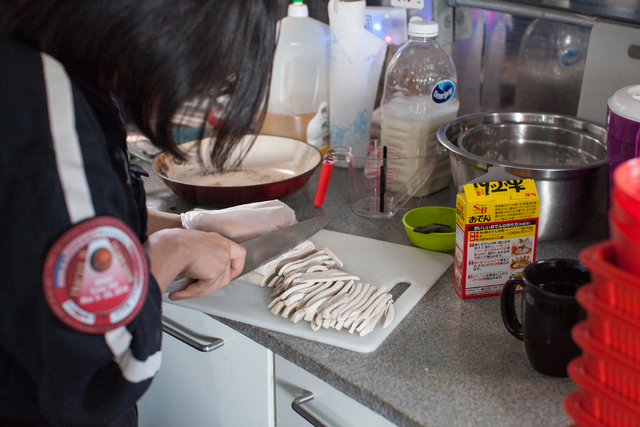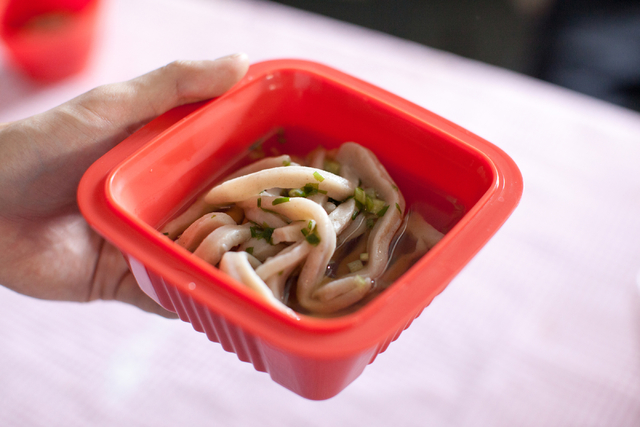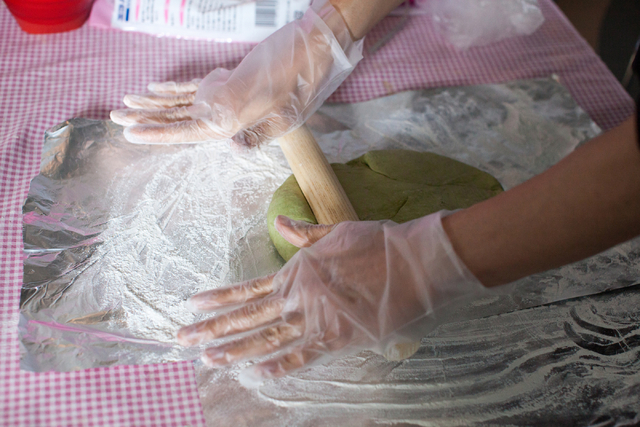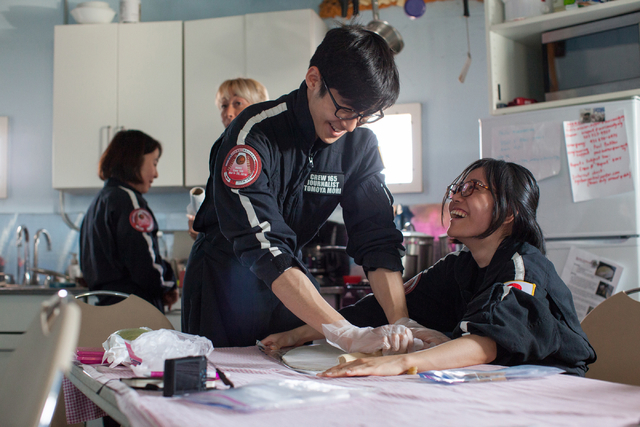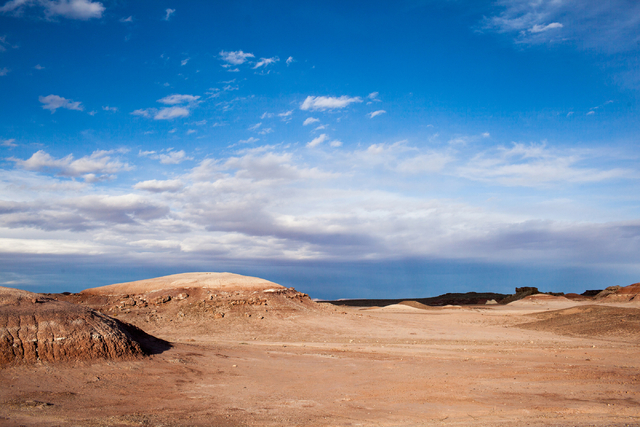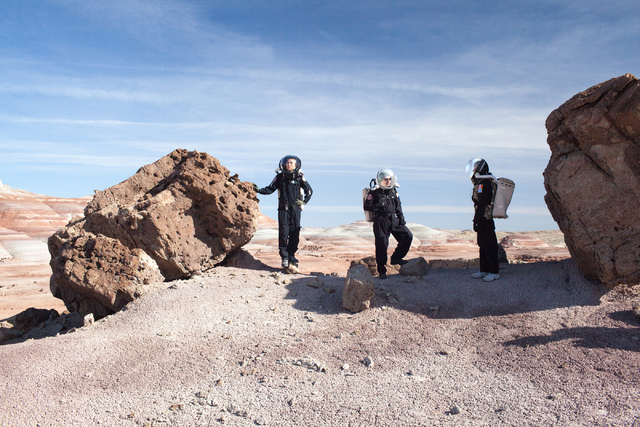Utah station mimics life on Mars
HANKSVILLE, Utah — Ken Sullivan peers out through the porthole of his temporary Martian habitat, which is shaped like a tiny white thimble marooned in a forlorn, boulder-strewn landscape.
The sturdy door appears submersible-thick — reinforced steel necessary to fend off the airless atmosphere.
It’s all just an illusion, of course, yet Sullivan plays the role of Mars explorer like a seasoned Broadway actor; with an occasional wink to the audience.
“You have to stay in the waiting capsule for three minutes. We do the whole pressurizing routine,” he shouts through the glass. Then he pauses: “It’s really just pretend, though.”
Far from pretend, this is a legitimate trial run for the real thing: Sullivan, 40, is one of six inhabitants of the Mars Desert Research Station; a haphazard collection of structures in the remote high-desert of eastern Utah designed to test the imagined physical and emotional stamina required to colonize the Red Planet.
Since 2003, some 1,000 educators, scientists, artists and graduate students from around the globe have spent two-week stints at this makeshift settlement designed to mimic life on Mars. The station is one of two outposts (the other is in the Arctic) operated by the Mars Society, a nonprofit group seeking to help pave the way for future space exploration.
At the Utah station 400 miles northeast of Las Vegas near the terrestrial town of Hanksville, a team of U.S., Canadian and Japanese researchers recently endured the same deprivations as astronauts would tens of millions of miles from Earth.
Before they leave their two-story habitat, or Hab, the crew members don mock 1950s Flash Gordon-style spacesuits with bubble-shaped helmets and square backpacks holding a mobile generator that pumps a continual air flow. Cellphones are forbidden. They eat freeze-dried food made from insects, monitor water and bandwidth use and face frustrating 20-minute delays in any email or voice transmissions, just as they would if communicating between Mars and Earth.
“Such research is vitally necessary,” says the Mars Society website. “For example, it’s one thing to walk around a factory test area in a new spacesuit prototype and show that a wearer can pick up a wrench; it is entirely another to subject that same suit to two months of real field work.”
Just ask Tomoya Mori, a 22-year-old astronomy student at Brown University whose job is to document life at the settlement’s Hab, greenhouse, small observatory and equipment shed.
“One does not simply take photos on Mars,” he wrote in a daily report describing his first excursion in the bulky spacesuit and thick gloves.
The problem: he couldn’t focus the camera lens through the cartoonish bubble helmet, which reflected light that flashed into his eyes. Then there was his own hot air inside the sweaty suit.
“The condensation of water vapor of my own breath constantly blurred my vision,” he wrote. “It was like driving in rain — except I had no windshield wiper.”
“On Mars, there is no such thing as a simple task,” he added.
ARID. INHOSPITABLE. UTAH.
The facility, built in sections in 2004, cost hundreds of thousands of dollars to plan and construct. A Mars Society committee toured a dozen sites across the west before settling on rural Utah.
“We wanted some place remote, one that looked like Mars,” said Mike Stoltz, a society spokesman. “Utah sure fit the bill.”
Each year, some 13 different crews spend time at the site, running around on ATVs and taking walkabouts across several square miles of loaned federal land.
Those crews that don’t make the cut for scheduling must wait until the following year. The cost is $500 for students; $1,000 for professionals.
Even if it’s not really on the fourth rock from the Sun, the station is indeed isolated, the arid landscape punctuated by strange wind-scraped formations with a reddish hue. Just listen to a nearby motel worker’s directions to the site at the end of a rutted circuitous dirt track:
“Go four miles out of town and turn right on Cow Dung Road. There’s no sign — people keep stealing it. Go four miles; it’s really rocky so drive carefully, like you’re driving a limo. At the fork, go left. That’s Mars. The other way goes to some prehistoric dinosaur dig.”
One challenge is suspending the disbelief that might dampen the experience, especially for crew members training for an actual seven-month, one-way mission to Mars.
Crew leader Pamela Nicoletatos, a physically fit 42-year-old teacher from the Netherlands, imagines her time at the capsule site as really inhabiting another planet. Like Sullivan, a professional helicopter pilot from nearby Farmington, she considers a Mars colony more than a far-fetched fantasy.
As a result, Nicoletatos’ daily reports are filled with otherworldly wonder.
“Wow, what a morning on Mars!” she wrote in one report. “There are literally no words to describe the beauty of this planet.” And following a foray in her bulky spacesuit: “Never have I been more grateful for going to the gym back on Earth than as I slowly traversed the terrain dragging scrap with the added weight of my pack! Slow and steady wins the race.”
In the communal kitchen, where the crew busily made lunch of Udon noodles, she describes her transition point between Earth and Mars.
“It comes each time the Hab door closes,” she says. “Then it’s ‘OK, we’re really here on Mars. There’s no one else around.’”
Except the occasional alien.
Off-road bikers and hikers gawk. Sometimes they knock at the Hab, prompting a member to suit up for a meet-and-greet to explain the mission.
MYSTERY COOKIES ON MARS
Inside the Hab, talk often centers on their first meal back on Earth: Steak and burritos, fresh fruit and ice cream. Food here is seldom much to write home about. Take the day a crew member made cookies. Sullivan said they smelled divine and wanted to know what was in them.
“I don’t think you really want to know,” said another.
They were made with cricket flour, one of the insect-based staples of a perceived Martian diet.
“I thought they were pretty good,” Sullivan says. “They tasted like oatmeal.”
There are other hardships: lightless sleeping quarters smaller than prison cells; switches that often fail; wind and running shower water that rock the Hab like a jalopy rambling down the freeway.
“This place is pretty much like an old pickup truck — worn and used,” Sullivan says. “It’s nothing like the 2001 Space Odyssey habit I imagined.”
Water is precious, so showers are short. Sullivan set the record for least water used at 0.7 gallons, but it wasn’t easy.
First, a madcap blast of cold water to wet his hair. Then he lathers his head and body. Another blast of water to rinse his body and a third to flush away shampoo.
Each night, the crew reports back to Mission Control; a volunteer force, usually college students, that processes data and issues daily schedules from places like Australia and India.
After that, the time is theirs. Often they watch the glorious night sky through the camp telescope. Or they watch movies, like “The Martian,” starring Matt Damon.
“I’d already seen it in the theater but watching it here was a different experience,” says Nicoletatos. “You appreciate the isolation the character faced, and all the micro-managing of Mission Control.”
One day Utah station was told to repair the camp’s single slow-running toilet. Nicoletatos vetoed that command.
“If we broke it, we wouldn’t have the parts for any repair,” she says. “And it’s a bit of a jaunt in those spacesuits to the nearest bathroom.”
PONDERING HUMANITY
The brief two-week stint has suggested the interpersonal problems that could occur on Mars. Someone noted, for example, that one crew member was eating more than his share of chocolate, prompting Nicoletatos to ration the treat.
One day, Nicoletatos asked Sullivan if he wanted to make some apple bread.
“I knew that I should have said ‘Yes’ right away but to be truthful, I didn’t really feel like it,” Sullivan recalled.
“It’s a pretty easy question,” Nicoletatos said when he hesitated. “Yes or no.”
He made the apple bread.
“It’s tough,” Sullivan says. “We’ll conquer space long before we realize how do deal with each other on a psychological level.”
Still, Mori doesn’t wholly buy into the Mars experiment.
“It’s not real,” he says. “You don’t run out of food. There’s no sense of danger. We’re still heavily reliant on the outside world.”
Yet in a later report, he suggests that he’s beginning to revel in his faux Martian life.
“The crew has reached a consensus: Life on Mars is more comfortable than our life back on the pale blue dot. This is not a joke. Every now and then, the crew members murmur something like ‘I don’t want to go back,’” he wrote. “When the sun disappears behind the infinite red horizon, we can step outside and observe millions of stars that surround the Red Planet, pondering the future of humanity.”
Meanwhile, the crew ponders such questions as whether natural childbirth is possible on a planet with just 39 percent of Earth’s gravity. Or how Martian currency might consist of the everyday staples they value most: chocolate, ChapStick and toilet paper.
They keep their sense of humor.
One morning, three crew members take an excursion in their spacesuits, turning around at a rocky outcropping they now call Captain Kirk Point, a nod to the “Star Trek” TV show. Each trudges along, hearing only their own breathing, the hum of the backpack generator and an occasional squawk from a radio. They keep these escapades to three hours, before hurrying back to camp and its flush toilet — no urinating in these spacesuits.
With the camp in sight, Sullivan announces: “Home Sweet Home, er, I mean Hab Sweet Hab.”
From inside the dome, Mori uses a computer joystick to manipulate a rover the size of a toy truck. It rolls across the dirt and rock, camera neck swiveling. Suddenly, the rover charges at Nicoletatos, who backs away in mock horror.
“I think,” quips Sullivan, “that it’s on a seek-and-destroy mission.”
These would-be astronauts know that, if actually chosen for a Mars expedition, they could never return home. So what would they miss most? Family, of course, and the smell of falling rain; scuba diving and green grass.
Before lunch, crew members describe where their imaginations go at night. Someone mentions a long hot bath. Sullivan considers what preoccupies his thoughts in the complete darkness.
He pauses.
“Earth,” he says.



